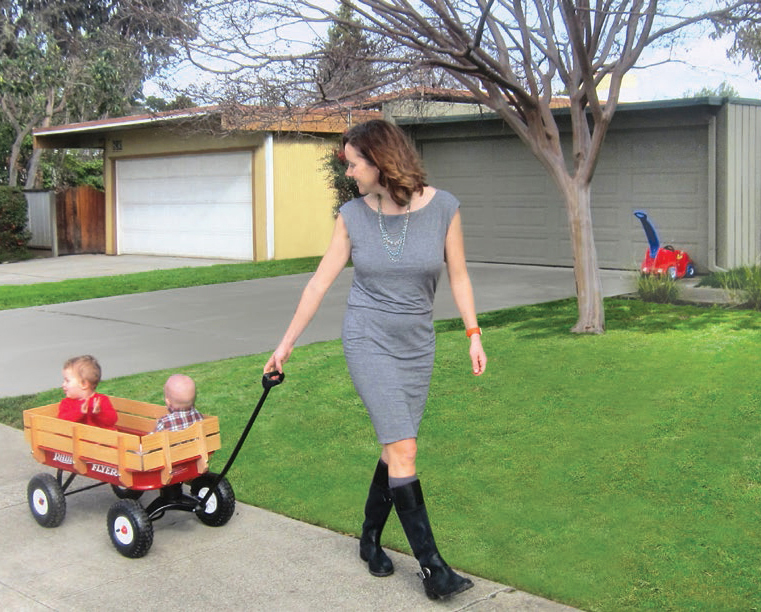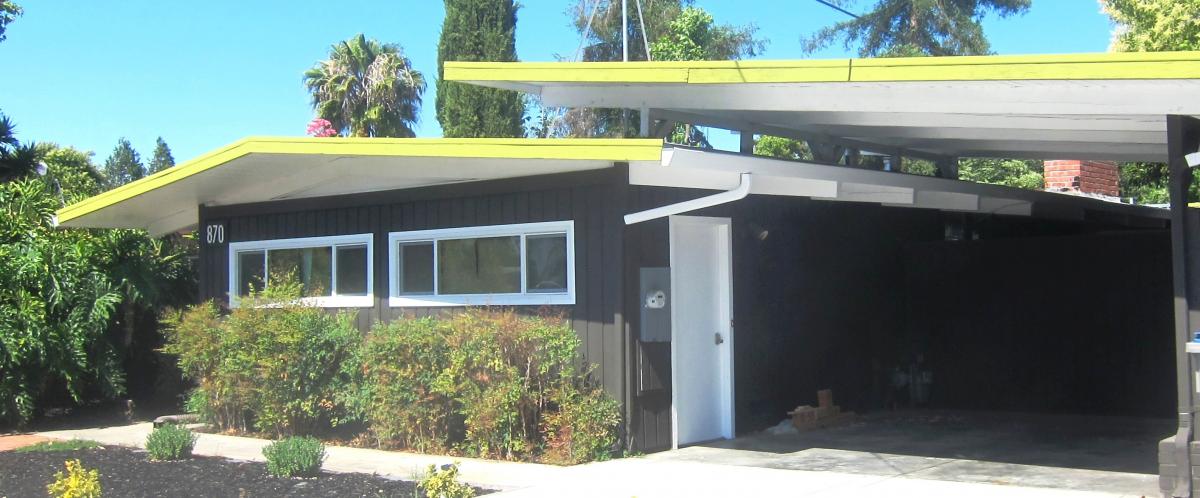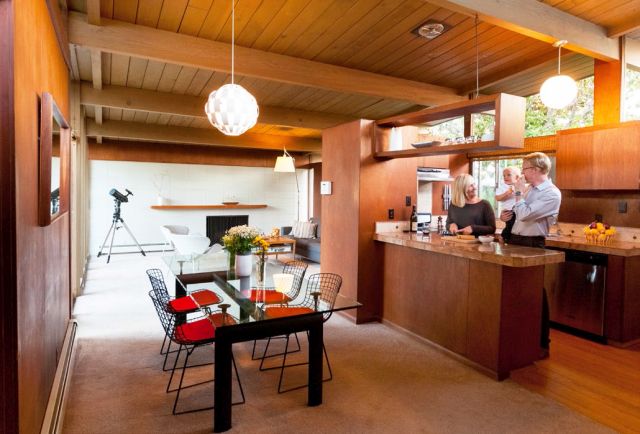
Eichler Owners Exemplify Enthusiasm
 |
|
|
For more than a decade now the author of this blog has been touring neighborhoods of Eichlers, and other mid-century modern homes, throughout Northern California and beyond, visiting people in their homes and often watching them outdoors at play.
The neighborhoods we have profiled always include many people who love their homes and appreciate their neighbors. Often, neighborhood connections run deep, along with appreciation for all things mid-century modern.
In this way, the San Jose Eichler development originally called Morepark, which we visit in ‘Morepark on the Move’ in the new fall issue of CA-Modern magazine, is completely, wonderfully typical. It’s a small neighborhood of three parallel streets, with homes built early in Joe Eichler’s career, from 1951 to 1953.
But relatively few neighborhoods we have visited have such an enthusiastic coterie who are devoted not just to life in their homes and their neighborhoods today, but to the neighborhood’s history as well – and to its future.
 |
|
|
“What sets the neighborhood apart is, we’re all excited to be here and we’re all trying to make it so much better,” says Morepark's Elyse Frisch. “We watch what each other are doing with the houses. We get good ideas from each, like what to do with the backyard.”
Some passersby don’t even recognize these compact, early homes as Eichlers.
They’re smaller than later Eichlers and simpler in plan and in feeling, really suggesting, as later Eichlers do not, the compact homes designed in the post-World War II years by such progressive architects as Joseph Allen Stein that were meant to be endlessly replicable, low-cost 'social' housing.
Although Morepark – it’s in San Jose’s Rose Glen area, near San Jose City College – has had many longtime enthusiasts, including community activist and resident Susan Price-Jang – it’s some of the newcomers who are placing the area on the Eichler map.
Karina Marshall, for one, devoted much time to researching the history of the tract – rediscovering the almost forgotten name ‘Morepark.” She traveled to the A. Quincy Jones Archives at UCLA to delve into the neighborhood’s history. Some of her discoveries were displayed at a fun mid-century-themed neighborhood party.
And it was Marshall who gathered together many of her neighbors to greet the author of this blog, show him around the neighborhood, and plant the seeds for the article in the new CA-Modern.
 |
|
|
As often happens, when a reporter visits an Eichler neighborhood to meet neighbors and visit houses, it turns into a bit of a neighborhood party and a group tour.
What the tour revealed was, surprisingly or not, just how original many of the homes in this neighborhood remain. Many, for example, retain their original mahogany paneling – and some retain original kitchens.
Unlike later Eichlers, which mixed mahogany paneling with drywall inside, here mahogany is used throughout, usually in every room.
Only one house has gotten a second story, Karina says, adding that another that had been given a peaked roof was restored by a new owner, who had the roof removed. One home, amusingly enough, has had Greek columns added to its garage and entryway.
 |
|
|
“This neighborhood has a lot more original [houses] than most,” says Elyse, who knows, because she visits open houses at Eichler tracts throughout the area.
Morepark is also a place where residents are focusing on the future, seeking to improve what is already a pretty good place to live. Susan Price-Jang has won fans for recently convincing the powers that be to open a school area as a public playground.
Several residents, including Megan Blaine, an architect who lives in the neighborhood, and Mark Winkler hope to make the neighborhood better for pedestrians. “We want to see the neighborhood become more walkable,” Mark says. “People drive fast and these are wide streets.” Megan has even drawn up plans calling for wider sidewalks and narrower streets.
Mark says: “We want to reach out.”
 |
|
|
“The common thread.” He says, “is our intention to find a way to build more community.”
Serendipitously, our profile of Morepark relates directly to one other article in the fall issue of CA-Modern – and a bit less directly, to another. In ‘Lauan’s lost love’ we delve into the lore and lure of the Philippine mahogany panels that give Eichler homes so much of their character.
It was purely by chance that, while studying up on mahogany panels in Eichler homes, and wondering why so many homeowners have replaced them with blander siding, we came upon Morepark, where mahogany panels are still common.
These homes were also from the period when Eichler still used the panels throughout the house, including bedrooms, and not just in the more public areas.
Also, the fall issue profiles home builder Earl Smith in ‘King of the flat-tops.' Smith built thousands of low-cost, modern flat-topped homes throughout Northern California. He started building just before Joe Eichler entered the field, and gave Joe advice on building concrete slabs and flat top roofs.
Joe was influenced by Earl Smith – but Joe’s homes, even his early ones, were always a step or two above Earl Smith’s. Smith often advertised his homes as Model Ts, as in Model T Ford cars. In selling homes at Morepark, probably hoping to differentiate his models from Earl’s, who was also building homes nearby, Joe asked in his advertisements:
“Why buy a Model-T home when you can get so much house for so little?”
Visit Morepark with us in our sneak preview of the new fall '16 issue of CA-Modern magazine.
 |
|
|
- ‹ previous
- 190 of 677
- next ›



